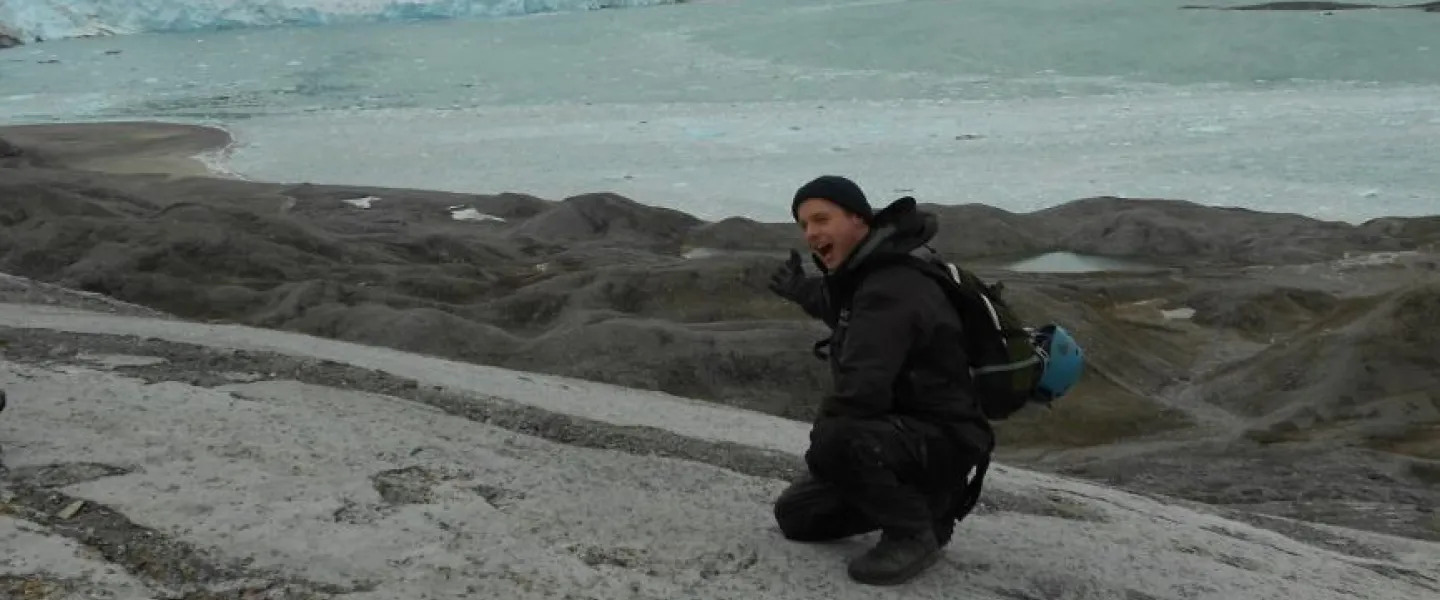
An international group of research scientists has developed a method to identify which glaciers in West Greenland are most susceptible to melting in the coming decades by analysing their shape. The study is covered in the latest issue of Nature Geoscience. Niels Jákup Korsgaard, a postdoctoral researcher at the University of Iceland's Institute of Earth Sciences is one of the team members. Furthermore, the scientists hope to better predict how much effect melting of the Greenland Ice Sheet will contribute to future sea level rise.
The Greenland Ice Sheet is the second largest ice sheet on Earth and has been losing mass for decades, trend scientists have linked to a warming climate. However, the mass changes in the Greenland Ice Sheet vary between areas which makes predicting the impact on future sea-level rise extremely difficult.
The aim of the study in Nature Geoscience was to tackle this problem and develop a method to estimate what causes this variability in glacial melting between certain areas. During their study, the group used a bedrock topography map of Greenland and satellite data from NASA. Using this and other data, enabled the scientists to calculate how far inland thinning that starts at the terminus of each glacier is likely to extend.
The results showed glaciers with thinning that reaches far inland are the most susceptible to ice mass loss. Other factors influence the thinning as well, such as the glacier's thickness and surface slope, which in turn is influenced by the landscape under the glacier. It is thus more likely that thinning spreads more easily across thick and flat glacier than if it is thin and the landscape under the glacier is steep.
The researchers investigated 16 glaciers in West Greenland with this new method. The research revealed that most glaciers are susceptible to thinning between 15-50 kilometres inland. It turned out that four of the glaciers were particularly prone to thinning according to the calculations: Rink Isbrae, Umiamako Isbrae, Jakobshavn Isbrae and Sermeq Silardleq. Jakobshavn is responsible for more than 81 percent of West Greenland's total mass loss over the past three decades, but it is susceptible to thinning around 240 kilometres inland according to the results. This is almost one-third of the way across the Greenland Ice Sheet. The reason for this is, according to the research team, that Jakobshavn flows through a very deep trough that extends deep into the ice sheet interior; much like the deep fiords on the west coast of Norway, making the ice thick and the surface flat.
The Umiamako and Sermeq Silardleq have also been losing mass in the past 30 years, and through shape analysis, the researchers found that the glacier Rink could start to thin if the front of the glacier, which is exposed to the ocean, becomes unstable. This is likely to happen as the climate continues to warm.
The research scientists claim that using these calculations will help identify which areas of Greenland may be most susceptible to melting, thus contributing more to future sea level rise than other areas. The method, however, does not predict how much mass loss is likely to occur in the areas in question. The research team will continue to use this new technology to analyse thinning of other glaciers, both elsewhere in Greenland and in Antarctica.
The research group includes scientists at universities in the United States, Denmark and the Netherlands as well as the UI's Institute of Earth Sciences. The study was in part funded by NASA.


